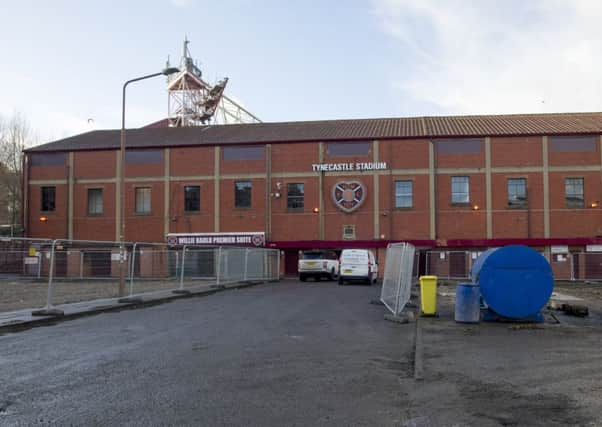Tynecastle stand's 103-year lifespan would have amazed designer


With the surrounding land already being prepared for a new 7,200 capacity main stand at Tynecastle, British football is set to lose another Archibald Leitch-designed structure.
Once stands at Hearts and Tottenham Hotspur’s White Hart Lane are demolished next year, only nine will remain in British football, with just two in Scotland. These are at Dundee’s Dens Park and Ibrox, with Leitch having grown up a Rangers supporter in Glasgow.
Advertisement
Hide AdAdvertisement
Hide AdInglis, editor of the Played in Britain series, is at ease with the situation whereby only two are guaranteed to remain; at Ibrox, where the Bill Struth stand is Category B listed (meaning special permission is required to alter it in any way), and at Fulham’s Craven Cottage, where the main stand is Grade 11 listed (a different grading terminology is used in England and Wales, but it essentially signifies the same thing; no alterations without prior consent from government agencies).
“I think the listing of the Rangers stand and the Fulham stand is probably appropriate,” said Inglis.
“Beyond that, they are interesting buildings but they are not buildings of any great engineering or architectural merit. We are fond of them for all sorts of reasons.
“But the ones that are already listed adequately record Leitch’s contribution. It is important not to get too carried away.”
As Inglis wrote in Engineering Archie, his study of Leitch and his work published 11 years ago, the designer’s signature pedimented gables and criss-cross steelwork balconies, as still evident at Ibrox today, “formed a recognisable and much admired style”. The Tynecastle main stand, the construction of which began as the First World War loomed, was not one of Leitch’s grander designs, however.
“Well built and very functional but essentially it was out of Leitch’s pattern book, if you like,” said Inglis. “It was a C grade stand.
“As an example of Leitch’s work it was not probably one of his favourites and it is not one of mine,” he added. “Having said that, the emotional engagement we have with it is not so much that it is a Leitch stand but that it is the only surviving link with the old Tynecastle.”
Nevertheless, Inglis is comfortable with its lifespan coming to an end, 103 years after the stand was opened. “As long as the stand is recorded and commemorated,” he noted. “The question I often ask myself is what would Archie Leitch say now. And I would suspect he would say: ‘that building has lasted 100 years? You are kidding me!’ ”